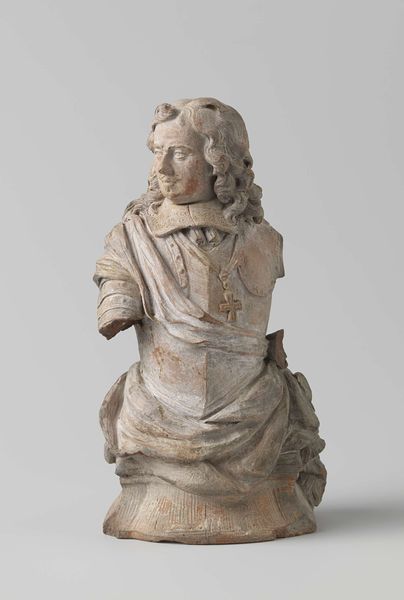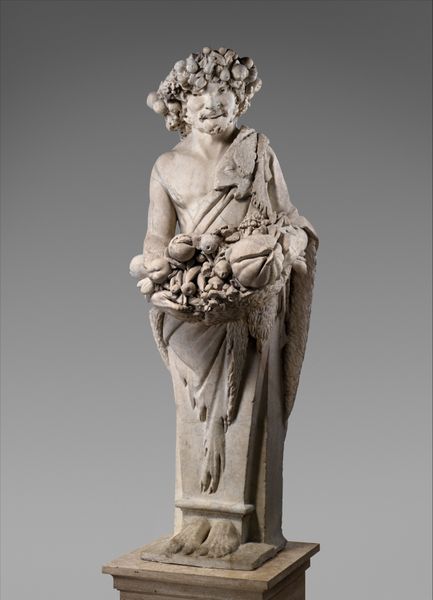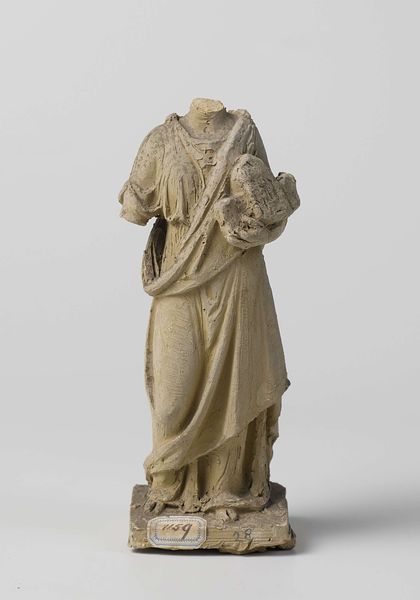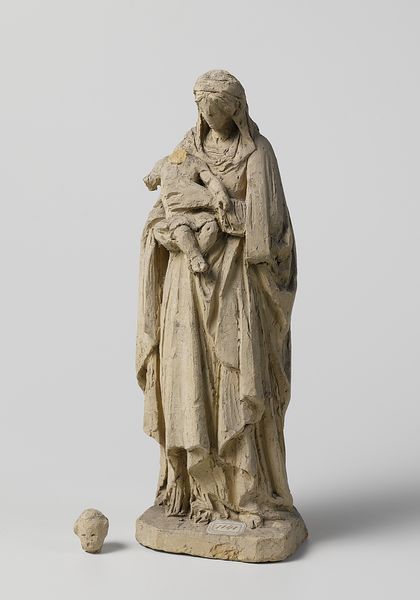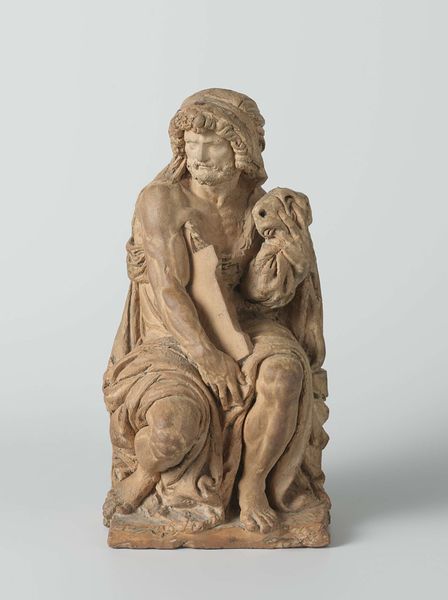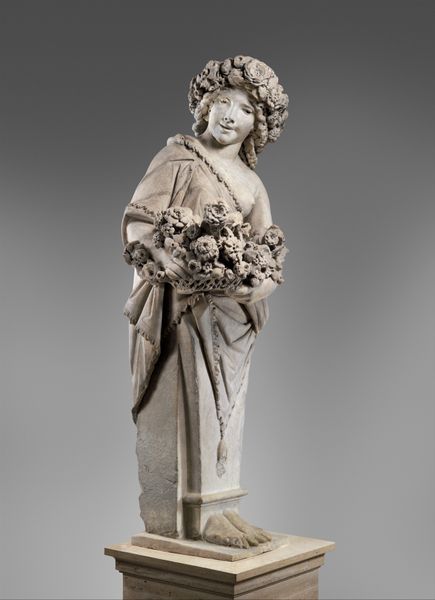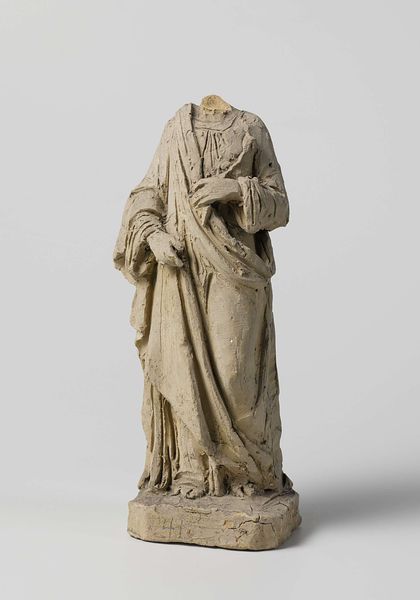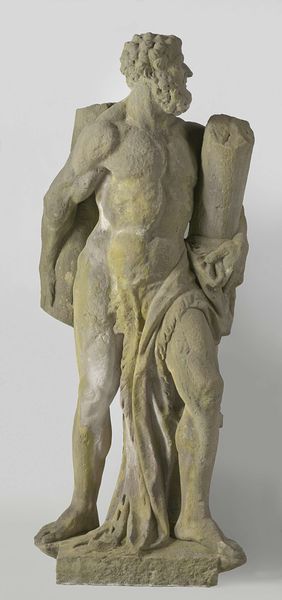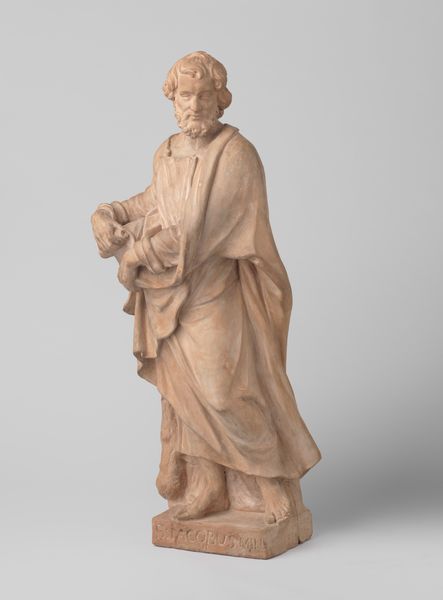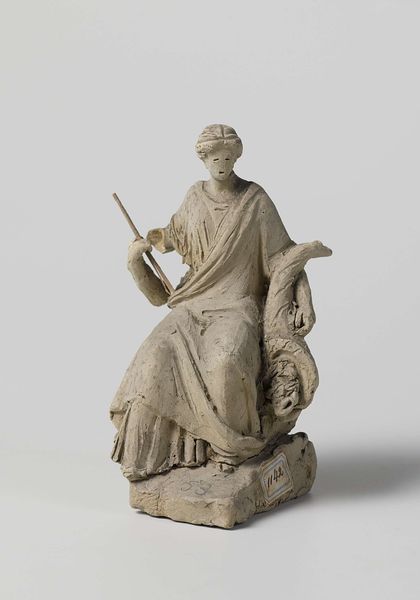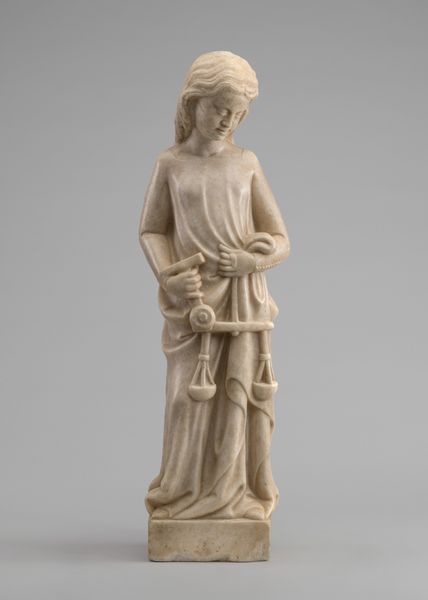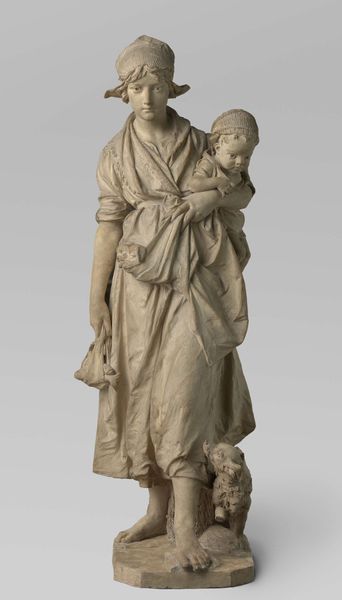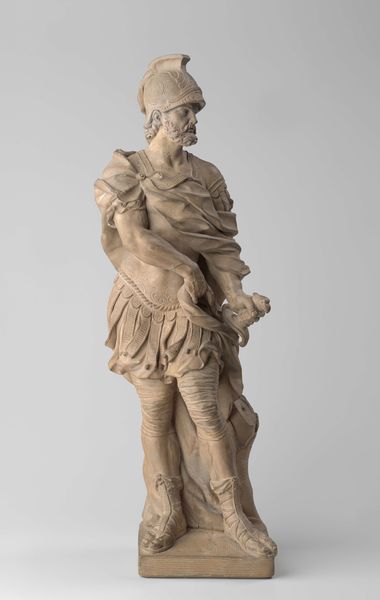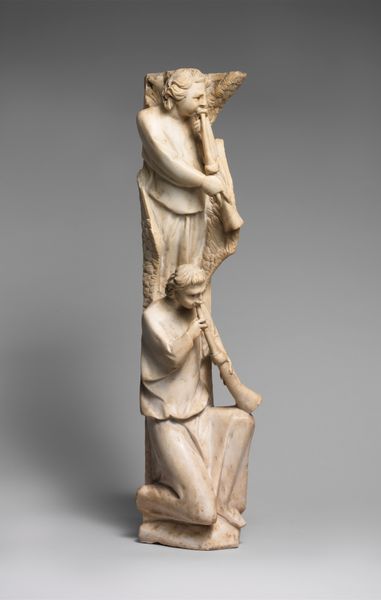
carving, sculpture, wood
#
portrait
#
carving
#
baroque
#
sculpture
#
figuration
#
sculpture
#
wood
#
history-painting
Dimensions: height 48 cm, width 22 cm, depth 11 cm
Copyright: Rijks Museum: Open Domain
Editor: So, this is Artus Quellinus’s "Saint Peter," carved in wood around 1658. I find the texture of the wood captivating; it seems to convey both strength and vulnerability. What's your take? Curator: The choice of wood is crucial here. It connects Peter, often depicted as a humble fisherman, to the raw materials of everyday life. In the context of 17th-century religious art, what does depicting Peter, who denied Christ, holding the cross imply about the social role of faith? Editor: It makes him seem very human, relatable almost. The rooster at his feet references his betrayal, right? Curator: Precisely. The rooster and the cross act as symbols of shame and redemption, ideas powerfully amplified within the social and political turmoil of the Baroque period. The Catholic Church utilized art strategically, so how might this sculpture serve a propagandistic function? Editor: I guess it reminds the viewer that forgiveness is always possible, a way of reinforcing faith during times of uncertainty. Were sculptures like this publicly displayed? Curator: Absolutely. These weren't just aesthetic objects, but rather visual tools that communicated moral narratives to a broad audience, shaping social behavior and solidifying the Church's power. Do you see a political statement being made by having him hold a ‘raw’ cross versus an embellished or golden cross? Editor: That's a really good point. The ‘raw’ cross says something about the core or fundamental beliefs of Christianity, the sacrifice for others. Thank you, that gives me a different perspective on the role this sculpture would play. Curator: Glad to help, it’s been interesting examining the function of this figure within both the artistic and social movements of the era.
Comments
rijksmuseum about 2 years ago
⋮
During the years when Quellinus was working on the new Town Hall in Amsterdam, he retained his workshop in Antwerp, which is where this figure of Saint Peter originated. It is a preparatory study for a large marble statue for the tomb of Pieter Saboth in the local Sint-Andrieskerk. Quellinus rarely produced works of a religious nature, such as this Saint Peter, in predominantly Protestant Amsterdam.
Join the conversation
Join millions of artists and users on Artera today and experience the ultimate creative platform.
